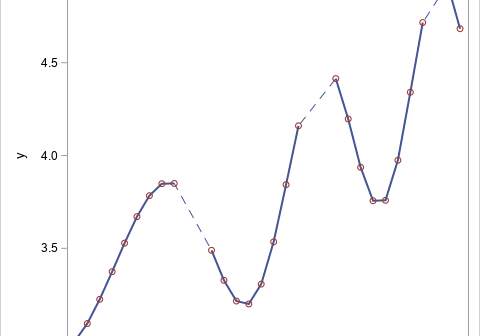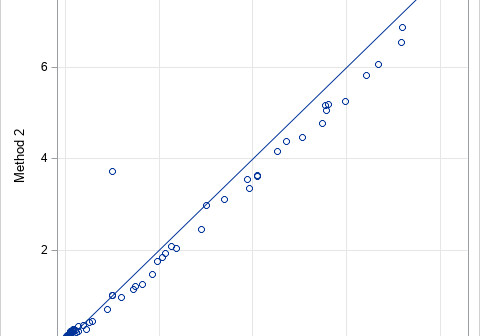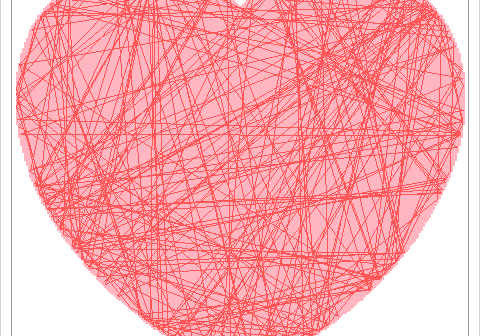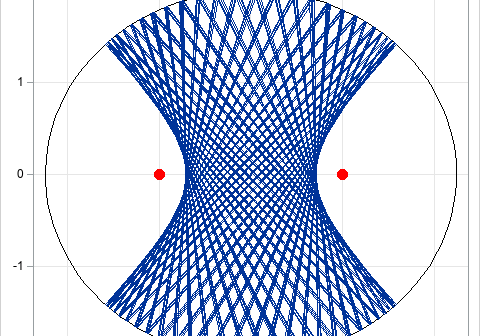The DO Loop
Statistical programming in SAS with an emphasis on SAS/IML programs
An experienced SAS programmer recently switched to SAS Viya and asked how to discover what products are available on his version of Viya. We discussed a few older SAS 9 procedures, and I showed him a new Viya-specific way to get information about his version of SAS and his licensed

It is important to be able to detect whether a numerical matrix is symmetric. Some operations in linear algebra require symmetric matrices. Sometimes, you can use special algorithms to factor a symmetric matrix. In both cases, you need to test a matrix for symmetry. A symmetric matrix must be square.

A SAS programmer asked an interesting question: If data in a time series has missing values, can you plot a dashed line to indicate that the response is missing at some times? A simple way to achieve this is by overlaying two lines. The first line (the "bottom" line in

This article implements Passing-Bablok regression in SAS. Passing-Bablok regression is a one-variable regression technique that is used to compare measurements from different instruments or medical devices. The measurements of the two variables (X and Y) are both measured with errors. Consequently, you cannot use ordinary linear regression, which assumes that

For some reason, SAS programmers like to express their love by writing SAS programs. Since Valentine's Day is next week, I thought I would add another SAS graphic to the collection of ways to use SAS to express your love. Last week, I showed how to use vector operation and

I recently showed how to find the intersection between a line and a circle. While working on the problem, I was reminded of a fun mathematical game. Suppose you make a billiard table in the shape of a circle or an ellipse. What is the path for a ball at
